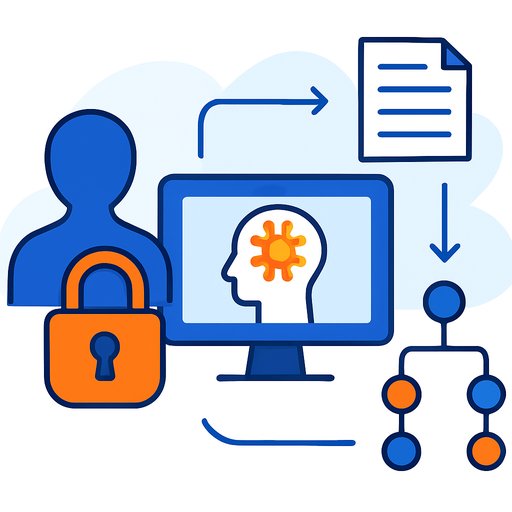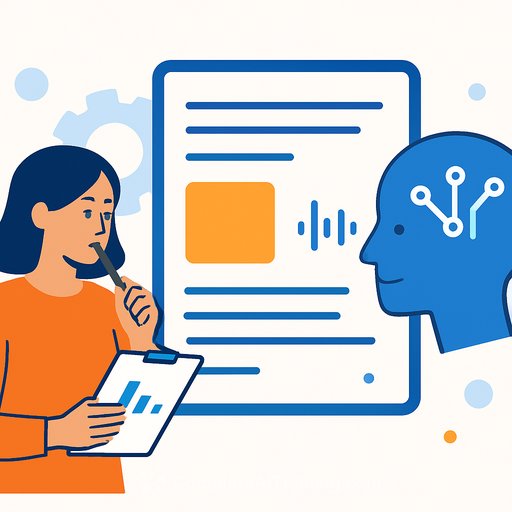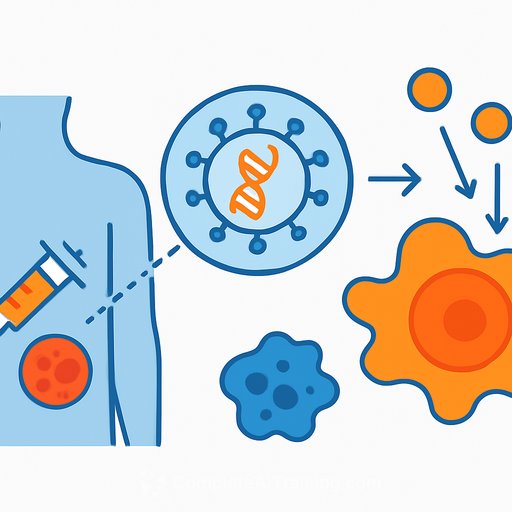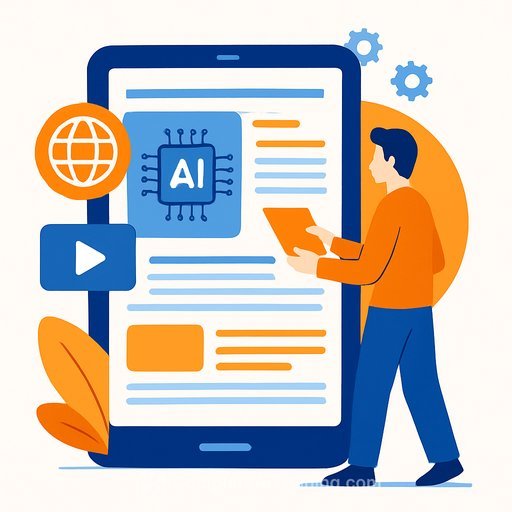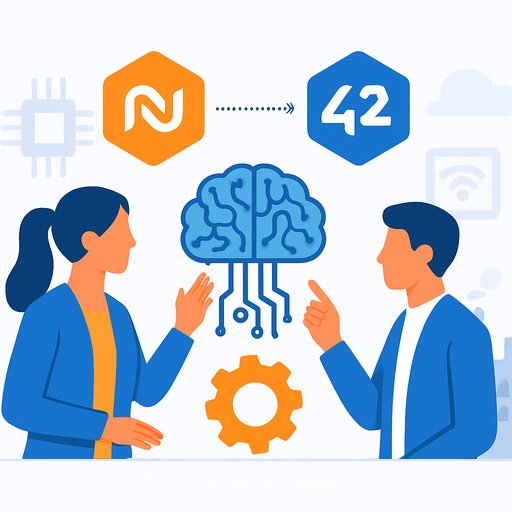Scaling Privacy Infrastructure for GenAI Product Innovation
GenAI is reshaping how products get built. It brings smarter features and faster cycles, while increasing the need to protect user data without slowing teams down. Here's how Meta scales its Privacy Aware Infrastructure (PAI) to keep privacy practical for product teams, using AI glasses as a concrete example.
The core idea is simple: bake privacy into the stack so shipping new features doesn't turn into a compliance maze. PAI gives teams real-time visibility into data flows, automated policy controls, and a way to prove that data use stays within defined purposes-at scale.
The Privacy Challenges Product Teams Face with GenAI
- New data types and volume: Sensors, multimodal inputs, and model outputs expand what's collected and processed. That makes data observability harder if it's an afterthought.
- Shifting requirements: Policies and regulations change. Product velocity depends on how quickly your infrastructure can adapt, not just your docs or review process.
- Faster build cycles: GenAI features ship fast. Privacy checks need to be automated, consistent, and embedded in the development workflow.
AI Glasses: A Clear Test for Privacy at Scale
AI glasses process continuous sensor inputs, run inference on-device and in the cloud, and return contextual responses in real time. Think scene understanding, reading signs on request, and natural, low-latency conversations.
This is a dense data pipeline: input streams, real-time processing, downstream logging, training signals, and model updates. It's the type of use case that exposes any cracks in privacy design. That's why Meta treats privacy as infrastructure, not a last-mile checklist.
What PAI Is-and Why It Matters to Product Teams
PAI is a suite of services, APIs, and monitoring systems that integrate privacy into product development from day one. It focuses on three capabilities that product teams care about.
- Enhanced observability: Automated detection and tagging at ingestion, plus end-to-end data lineage that shows where data comes from, how it moves, and how it's used.
- Efficient privacy controls: Policy-enforcement APIs apply rules at storage, processing, and access layers. Automation translates requirements into checks and workflow gates.
- Scale: Works across thousands of services and teams, giving engineers the autonomy to build while meeting privacy guarantees by default.
In practice, PAI runs a repeatable workflow across products: Understand → Discover → Enforce → Demonstrate. The "Discover" stage-lineage at scale-is where teams gain the visibility that makes enforcement credible and audits straightforward.
Inside the "Discover" Stage: Lineage at Scale
Lineage maps the full path of data through the stack. For AI glasses interactions, that includes web services, loggers, data warehouses, inference services, and training jobs. PAI collects signals at each boundary to build a single, end-to-end view.
- Within web services: Privacy probes track what data is collected and which components process it.
- Web → logger → warehouse: Lineage ties the logging pipeline to the warehouse assets and parses SQL and batch-processing logs to connect the dots.
- Web ⇄ inference: Calls to LLMs record which checkpoints are used, what inputs are sent, and what responses return.
- Warehouse → training: Lineage links training datasets to training jobs and the checkpoints they produce-critical for proving allowed purposes.
The output is a graph that shows exactly which systems touch interaction data. That precision lets teams enforce boundaries confidently and avoid guesswork.
Building Comprehensive Lineage Observability
- Link reads to writes: Every write operation is logged with the same correlation key as the reads that powered it, across SQL and non-SQL paths, including distributed I/O.
- Use a common privacy library: A shared library (PrivacyLib) initializes and propagates privacy policies, abstracts reads/writes/remote calls, and standardizes logging.
- Integrate everywhere: The library is implemented across major data systems and languages to cover all I/O paths, not just the easy ones.
The result: lineage you can trust, collected consistently across stacks and teams.
From Lineage to Proof: Policy Zones and Guardrails
Visibility is only useful if it drives action. PAI turns lineage into protection using Policy Zones and automated gates.
- Policy Zones: Sensitive data (e.g., AI glasses interaction data) is isolated into zones with explicit purposes. Training jobs only start if every input source is allowed for that purpose.
- Boundary enforcement: Cross-zone movement is blocked by default unless the policy permits it. Changes trigger remediation before they ship.
- Continuous verification: Verifiers monitor the lineage graph over time. New or changed jobs are flagged during development, not after release.
This structure provides a clear chain of evidence: what data was used, where it flowed, why access was allowed, and how policy was enforced.
What This Means for Product Teams
If you're building GenAI features, treat privacy like a core platform capability and give your team the tools to move fast without stepping outside allowed purposes. Here's a practical blueprint.
- Instrument early: Add lineage and policy propagation at the first data touchpoint. Retrofitting later costs more and misses coverage.
- Declare purpose upfront: Bind data assets to purposes on creation. Require purpose checks before jobs execute.
- Use policy APIs everywhere: Reads, writes, and RPCs should consult policy and log decisions automatically.
- Gate CI/CD: Block merges when lineage is incomplete, a boundary crossing lacks approval, or a training job includes disallowed inputs.
- Automate approvals: Encode regional and product rules so approvals are policy-driven, not hallway-driven.
- Prove it: Keep a verifiable record of data flows, policy checks, and training inputs for audit and remediation.
Metrics Worth Tracking
- Lineage coverage: Percent of services and I/O operations with complete read/write linkage.
- Pre-prod catch rate: Policy violations caught before launch vs. after.
- Time to approve data use: From request to automated policy decision.
- Training job conformance: Share of jobs with fully allowed inputs and documented purpose.
- Deletion and retention SLAs: How quickly data lifecycle actions execute across the stack.
- Audit completeness: Ability to reconstruct data paths and policy checks for any asset.
Why This Scales
PAI shifts privacy from manual reviews to infrastructure. Data lineage provides real-time insight into every data flow. Policy APIs apply rules consistently. Verification keeps teams honest without slowing them down.
As GenAI products evolve, privacy expectations rise with them. By upgrading lineage analysis and developer tooling, PAI gives product teams a way to ship next-gen experiences with clear, enforceable guarantees.
Key Takeaways
- Scale infrastructure, not just rules: Build privacy into the stack so it travels with your features and teams.
- Make lineage non-negotiable: You can't enforce or prove what you can't see.
- Automate guardrails: Turn requirements into APIs, gates, and verifiers that run continuously.
- Speed and safety go together: Instant feedback and automatic controls reduce friction and help teams ship with confidence.
Further Reading
Level up your team's AI skills
If you're building or managing GenAI products, focused upskilling pays off. Explore role-based learning paths here: AI courses by job.
Your membership also unlocks:

